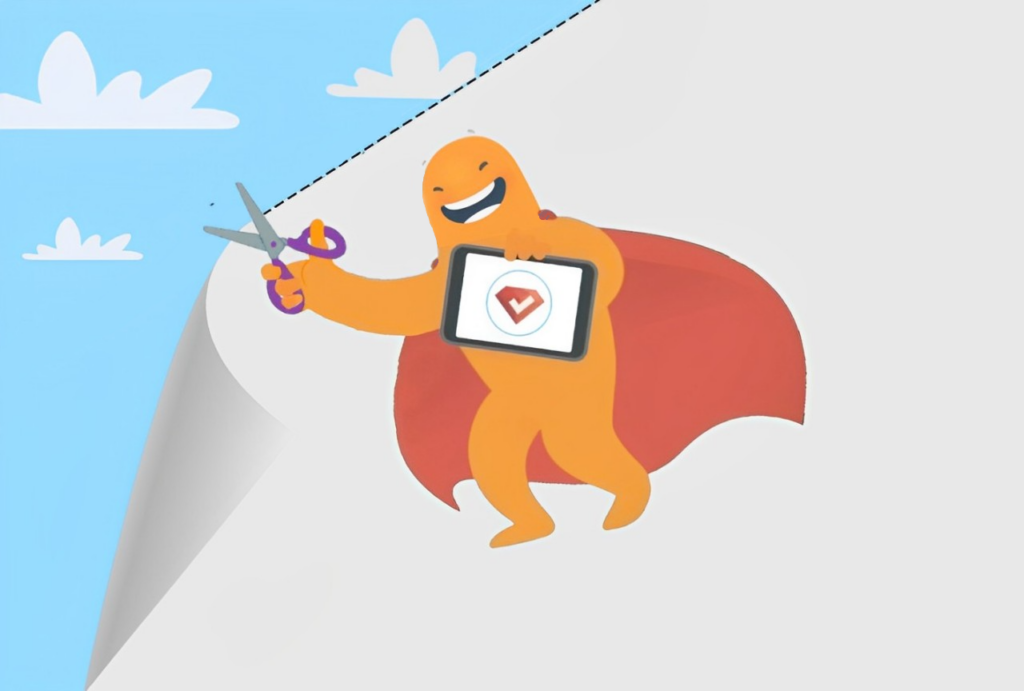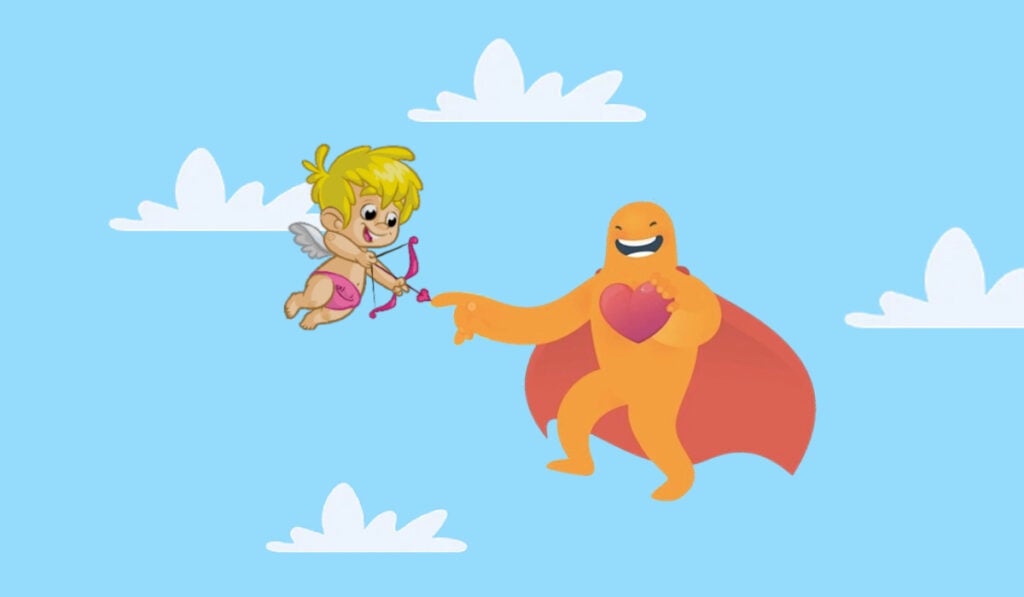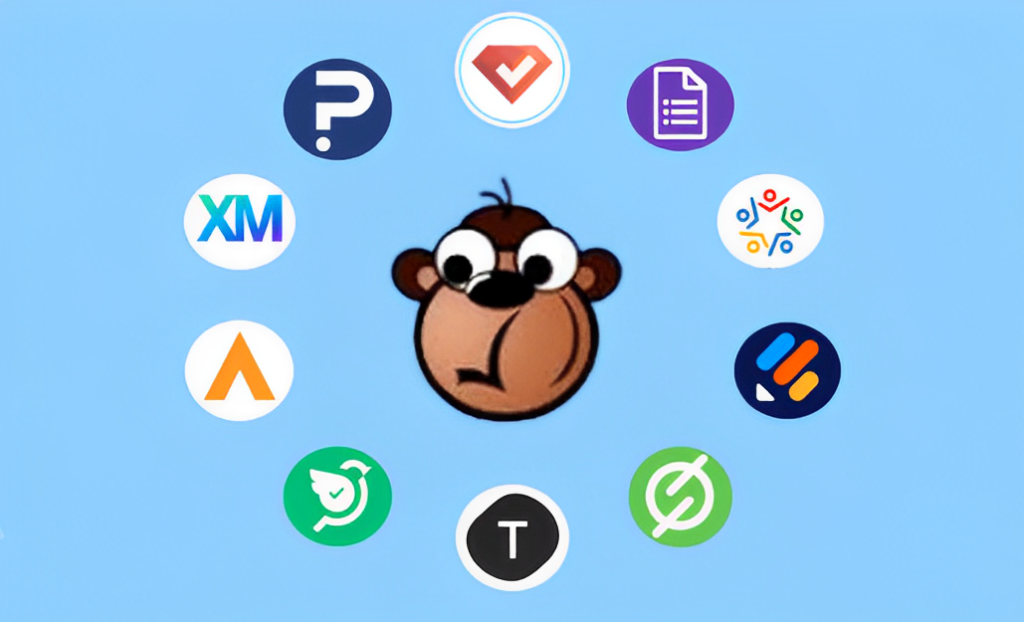Humans are visual creatures. Of the five senses, most of us rely on sight the most to process information. So, it only makes sense to include images in questions and answers when creating a survey. In doing so, you can increase engagement and understanding, trigger emotions and memory, and ultimately, improve response rates and the quality of data. While image-based surveys are certainly powerful research tools, there are a few mistakes that can be made when adding pictures to surveys and polls, which we’ll take a look at in this blog.
Create your image-based survey, poll, or questionnaire now!
The Power of Images in Surveys & Polls
Our brains were designed for visual information. Science has proved this time and time again. Just take a look at these powerful image statistics:
- 90% of the information processed by the brain is visual.
- It takes just 13 milliseconds for the human brain to process an image.
- The human brain processes images 60,000 times faster than text.
- 80% of people remember what they see (versus 10% of what they hear and 20% of what they read).
- 95% of buyers said that they wanted shorter and highly visual content.
- Content with visuals grows traffic 12 times faster than content without.
- Images increase brand awareness by 20% and purchase consideration by 40%.
This data shows why it’s so important to use visuals – but, you have to be sure to use them the right way. Let’s look at some mistakes to avoid with image-based surveys.
5 Things to Avoid with Image-Based Surveys
While creating a visual survey can greatly improve data accuracy and response rates, there are a few things you should try to avoid.
1. Picture Size
Size matters when it comes to photo selection, especially if you’re asking respondents to vote on images. Be sure the subject of the photos are always similar in size to be fair and impartial. In the example below, you can see how poor Jaguar gets the short end of the stick, with a much smaller logo than the other auto manufacturers. This could have a siginificant impact on respondents’ image selection.
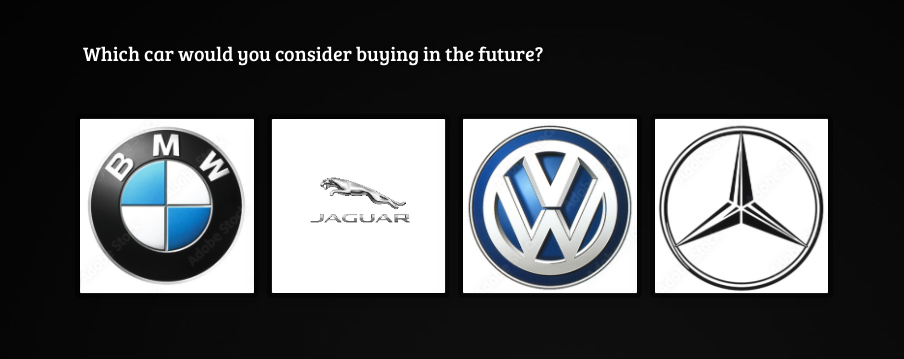 Note: Visual example created using SurveyLegends online survey, form, and polling tool.
Note: Visual example created using SurveyLegends online survey, form, and polling tool.
2. Background Image
The choice of imagery used in the background is also a consideration. In the example above, a neutral blue background with white bubbles representing soda was used. Now, in the below image survey example, although the Pepsi logo has been corrected, a background with a brown cola image has been chosen. This could subconsciously lead someone to select the brown-colored sodas, Coca-Cola or Pepsi, instead of the clear soda, Sprite.
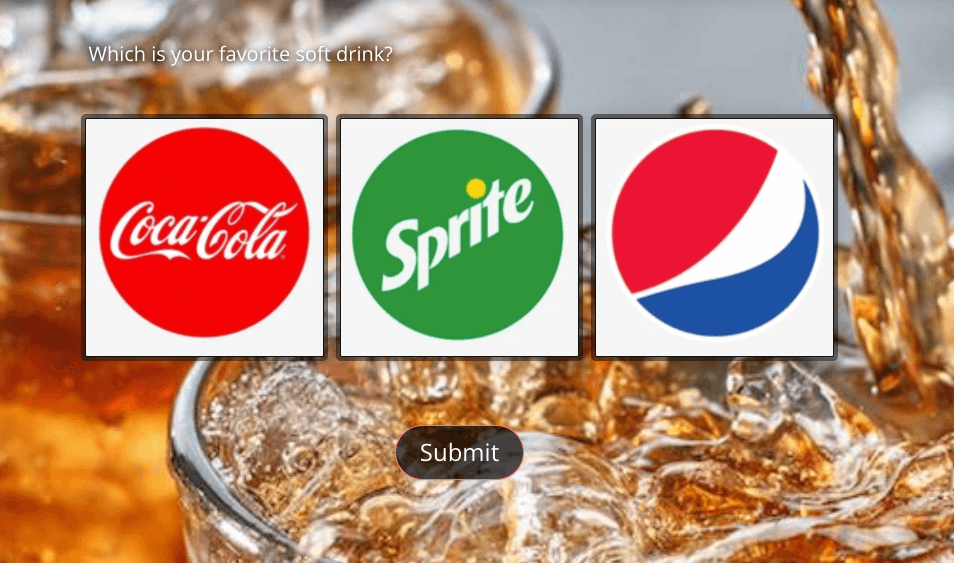 Note: Visual example created using SurveyLegends online survey, form, and polling tool.
Note: Visual example created using SurveyLegends online survey, form, and polling tool.
3. Picture Quality
Each image selection should be of high quality to give impartiality to each (the standard resolution for web images is 72 PPI, or pixels per inch). As you can see in the example below, “Leilana” is unfairly represented with a low-resolution photo, which could impact people’s selection process.
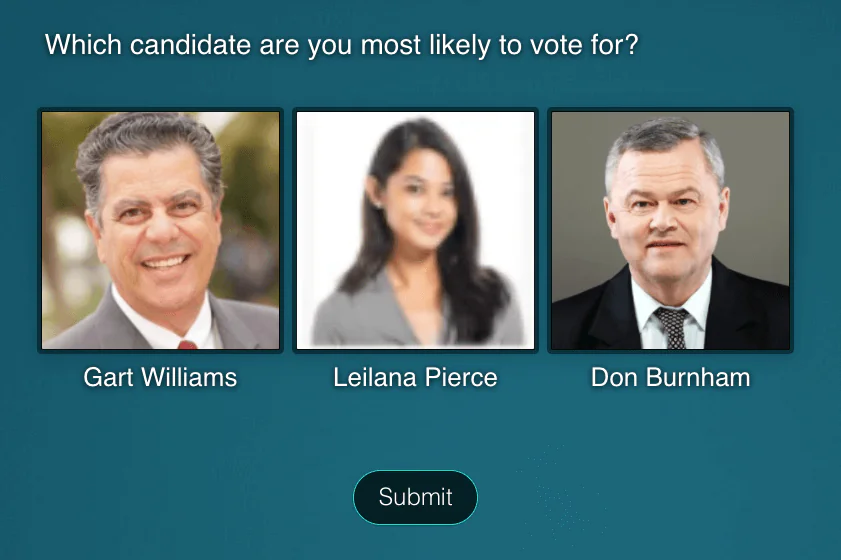 Note: Visual example created using SurveyLegends online survey, form, and polling tool.
Note: Visual example created using SurveyLegends online survey, form, and polling tool.
Create your images-based survey, poll, or questionnaire now!
4. Picture Choice
You can do everything right, but then make the mistake of choosing a photo that’s not flattering or not representative of the subject on any given day. In the extreme example below, New York and Venice are photographed on a beautiful day, while Shanghai in this particular picture poll is experiencing an unusually smoggy day. This can certainly influence a respondent’s image selection.
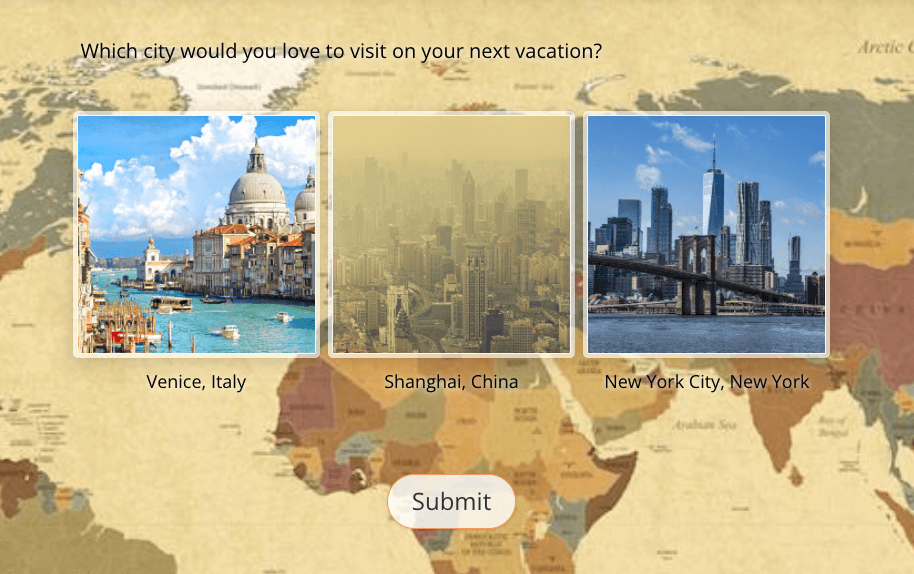 Note: Visual example created using SurveyLegends online survey, form, and polling tool.
Note: Visual example created using SurveyLegends online survey, form, and polling tool.
5. Image Interpretation
When using images, especially those that are emotion-based, you don’t want people to take them too literally. Check out the sample image poll below, about a new body wash. Now, body wash isn’t something most people are going to get too excited about one way or the other. So, if they vote on images literally, very few are likely to choose #1 or #5. So, you’ve essentially whittled your five-answer survey down to three answers. Instead, you might have chosen less dramatic faces for anger/disgust and happiness/ecstasy.
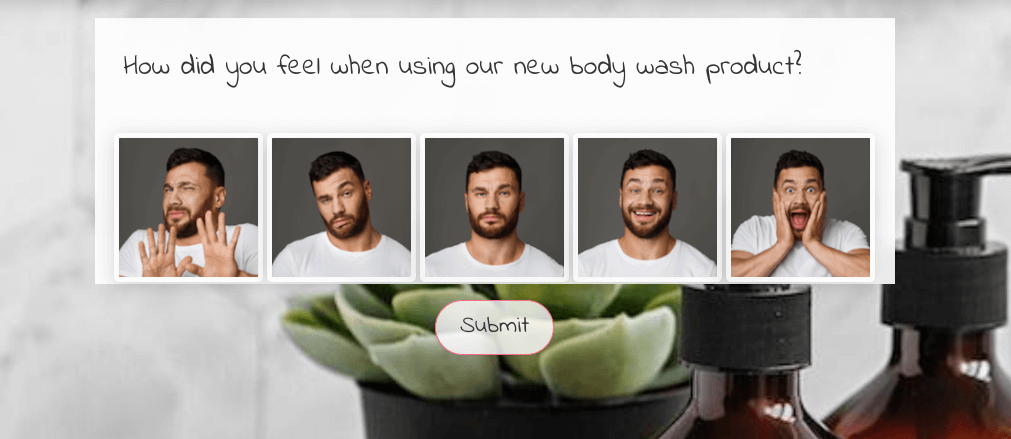 Note: Visual example created using SurveyLegends online survey, form, and polling tool.
Note: Visual example created using SurveyLegends online survey, form, and polling tool.
Conclusion
With the average response rate for online surveys falling between 10% and 30%, researchers have their work cut out for them. However, science shows that we’re extremely visual beings, so why not create a poll with pictures? You’ll collect more responses and improve the accuracy of your data, so it’s a real win-win (be sure to check out our blog on the 7 advantages of image-based surveys).
Of course, just as the wrong wording can turn a survey question into a leading question, the wrong image can influence survey respondents too. So, always be sure you’re choosing fair and impartial photos or illustrations to be sure your survey results are valid. Once you’ve found your visuals, SurveyLegend makes it easy to create a free poll with images! With SurveyLegend, images can be resized and moved around, complementing questions or answers, or used to create beautiful, welcoming backgrounds. You’re also not limited in the types of image polls and image-based surveys you can create; for example, you can make clickable image polls, visual-based multiple-choice selections, ranking surveys with emojis, and much more.
Have any other tips for researchers creating image-based surveys? Have you found them to be more successful than text-based surveys? Let us know in the comments!
Create your image-based survey, poll, or questionnaire now!
Frequently Asked Questions (FAQs)
What is an image-based survey?
Rather than just using text-based questions, image-based surveys use photos and illustrations as questions or answers to better engage respondents. Higher engagement leads to better response rates and ultimately, more accurate data.
Is there data that supports using image-based surveys?
Overwhelmingly. Since 90% of the information processed by humans is visual, and our brains take just 13 milliseconds to process an image, visuals are much more powerful than text only. Plus, in a survey, 95% of buyers said that they wanted shorter and highly visual content.
Can survey visuals influence respondents?
Survey images are meant to aid in understanding, not influence. However, if the researcher chooses unflattering photos, unfairly sizes certain photos in relation to others, or chooses low-quality resolution photos, results could be skewed. So, always choose fair and impartial survey image



